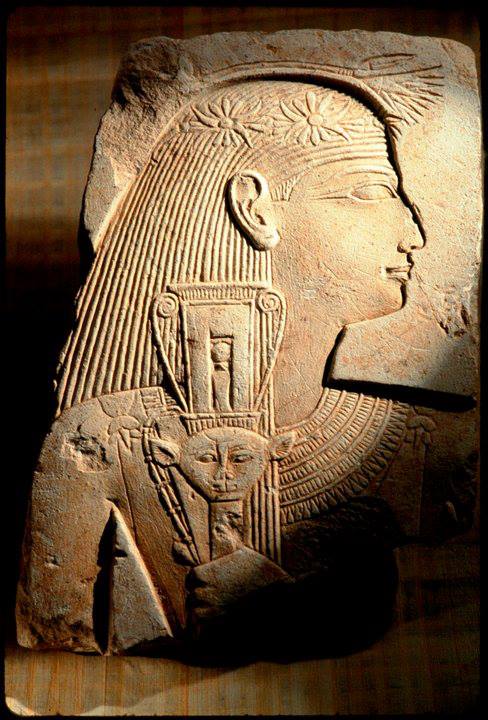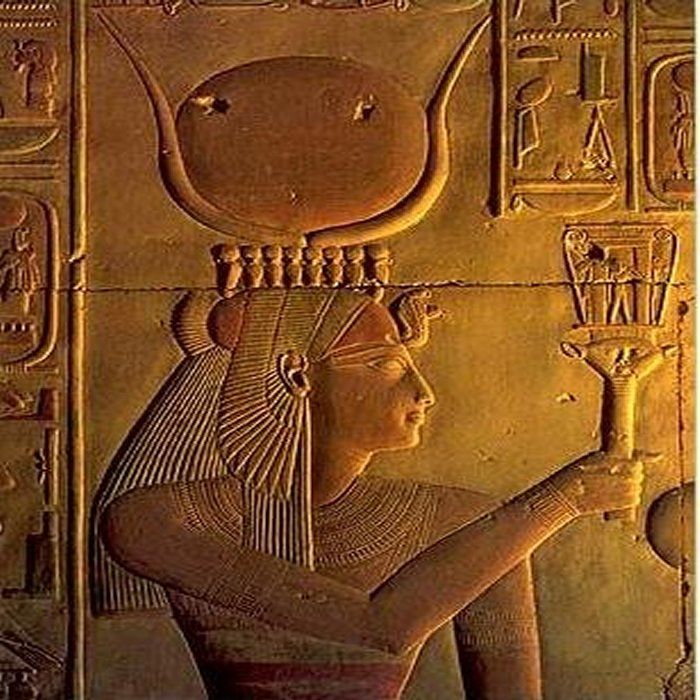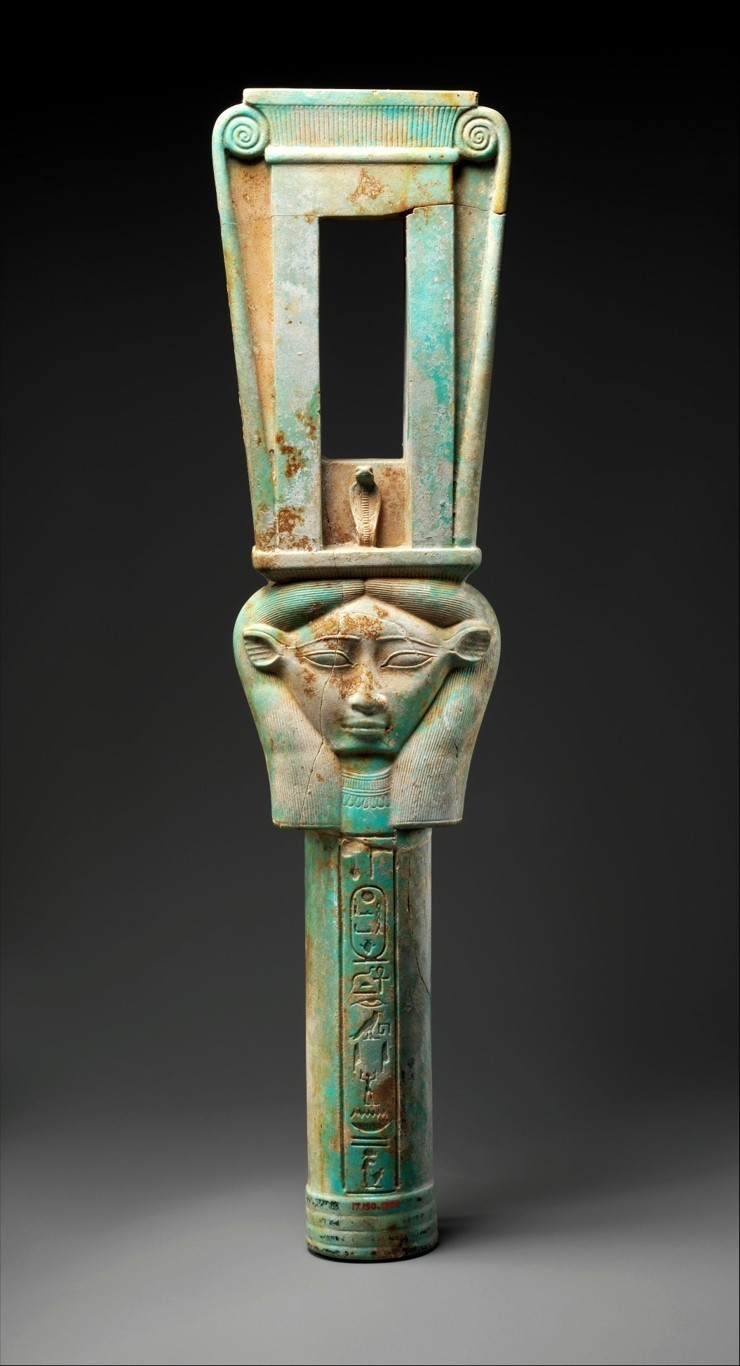For some, the sistro acts as the entrance and exit from one place to another used by the gods (portals), since it appears near the ‘false doors’ of ancient Egyptian temples. This led to the belief that this artifact maintained by the Egyptian gods had the power to open portals.
One of the most sacred musical instruments in ancient Egypt was the sistro, used not only to produce peculiar melodies but also for religious purposes. It was believed to have magical properties and could appease dangerous deities and improve the climate. Let’s take a look at the history and the meaning of this unique instrument.
The sistro and its use in ancient Egypt
Originally, the sistro was an instrument used by the gods, it can be seen in the hands of the goddesses Isis and Bastet, but it is mainly linked to Hathor considered among many other aspects as the deity of the firmament, known as the “lady of the stars” and “Sovereign” of the stars “linked to the Syrian star, and a representative of the origin of the Egyptian gods.
In addition, considered a magical instrument, the sistro was used officially and permanently in the cult of the goddess Hathor, as it evoked joy, festivity, fertility, and was the goddess of eroticism and dance. Depictions of the goddess Hathor have been found holding a sacred sistro.

Likewise, the Egyptians used the sistro to placate the Nile River and try to prevent it from overflowing its banks and causing floods that devastated agricultural land. Furthermore, it was believed that the sound emitted by this instrument scared Seth, the god of the desert, of storms, of violence and disorder.
In addition, the goddess Isis in her role as creator and mother was represented holding a bucket that symbolized the floods of the Nile in one hand and the other a sistro. This musical object was of great importance in the worship rituals performed by Egyptian devotees.
The sistro as a musical instrument
The sistro is a very old musical instrument, in the shape of a bow or horseshoe, and consists of metal plates inserted in rods. When shaken vigorously, it makes a sound similar to that of a breeze blowing through papyrus reeds. That’s how Egyptians and other Middle Eastern cultures described it.
The word sistro comes from the Greek word sinio, which means to shake. The instrument was called by the term sixtron, a word that refers to an object that is being shaken. As a percussion instrument of the idiophone family, it is in the same category as other more well-known instruments, such as bells, castanets and maracas.
The sistro and its symbolic meaning
In his essay “On Isis and Osiris”, the Greek historian Plutarch highlights the important role that the sistro played in the Egyptian cult. It was not only used as a musical instrument, but it also had a deep and powerful symbolic connotation.
Plutarch indicates that the shaking of the sistro to produce sound symbolizes the fact that all existing things need to be shaken for them to wake up and function. Movement is something that can never and should not be interrupted for things to get out of the state of drowsiness and grow.
Furthermore, with the use of the sistro, an attempt was made to control and appease the destructive forces of nature. It was also a means of influencing the gods, whether to please, worship or even frighten and repel. It would not be dare to say that the sistro was a kind of cult object or even an amulet.
The instrument’s sound was also considered protective and symbolic. It was related to divine blessing and the concept of rebirth, not only by the symbolic meaning of its sound but also by the shape and decoration of the artifact, linked to the deities.
The Egyptian sistro

So far, two forms of this ceremonial instrument can be distinguished, the oldest of which is probably the ‘sistrum naos’ which had Hathor’s head and which was placed in a small shrine or box in the shape of the naos (inner chamber of a temple that houses a cult figure). Hathor’s head is often depicted on the hilt, incorporating a pair of cow horns into the design (Hathor is commonly described as a cow goddess).
During the Greco-Roman period, a second type of sistro became popular. Known as sekhem or sekham, this sistro had a simple arch-shaped structure, usually constructed of metal. The sekhem looked like a closed horseshoe with a long handle, showing loose, crossed metal bars on top of Hathor’s head.
The sistro consists of a magnum and a semicircular structure made of brass, copper, wood or clay. Small hoops are embedded in moving crossbars, and when the instrument swings, it produces a sound that combines a loud clink with a soft beat.
The sistro used in ancient Egypt had a basic shape similar to the Egyptian ankh or cross, and also evoked the face and horns of a cow. In many ancient representations, women and high priestesses are seen holding a sistro.
An instrument with mystical and religious overtones
It appears in a multitude of prints and murals across Egypt. Inside the temple of Hathor, this artifact can be found next to the Lamp or Bulb Dendera, represented in four sistros that seem to show that it was related to energy, vibration and some type of ancestral technology.
Some unconventional interpretations even relate the sistro with the entrance and exit from one place to another used by the gods, since it is seen in the false doors of ancient Egyptian temples, this can be seen in Karnak, where there is a structure of seven doors with a sistro pictured on the side. Which raises a concern: did this artifact maintained by the ancient Egyptian gods have the power to open portals?
Currently, murals and records can be found showing the priests of Isis or their assistants holding a sistro. Some researchers indicate that their sound can be used to enter trance states during which priestesses and priests can “commune” or communicate with beings in other dimensions of consciousness.

The sistro continued to be used in Egypt after the disappearance of the pharaohs. In Greek culture, sistros were also used, but not all of them should be played. Instead, they played a purely symbolic role in sacrifices, festivals and funerary contexts.
Today, the sistrum is still used in rituals in the Coptic and Ethiopian churches. It is played during the dance of the debtera (singers) in important festivals of the church. It is also occasionally found in Neopagan worship and rituals.
Undoubtedly, the sistro is an incredible and mystical object, which again confirms that the Egyptians were a civilization full of sensational secrets and stories.




